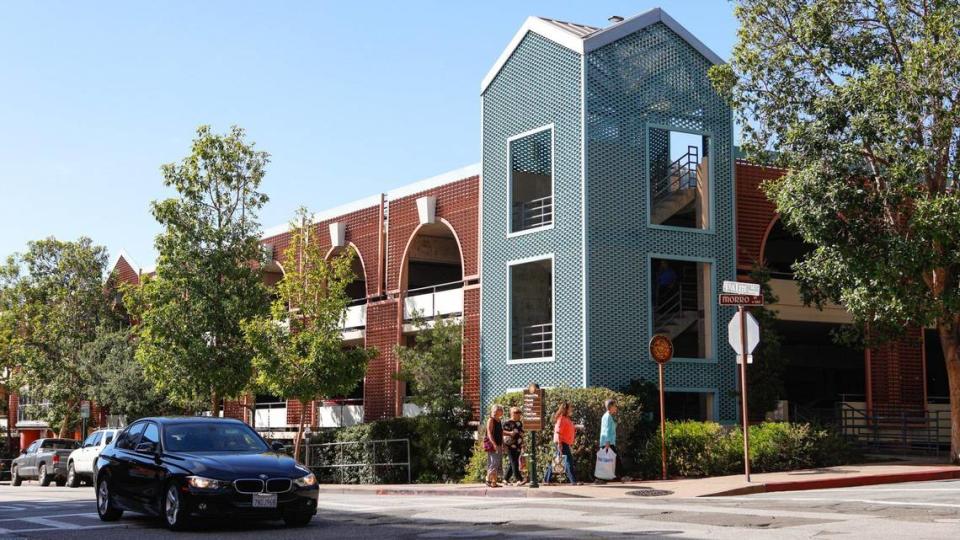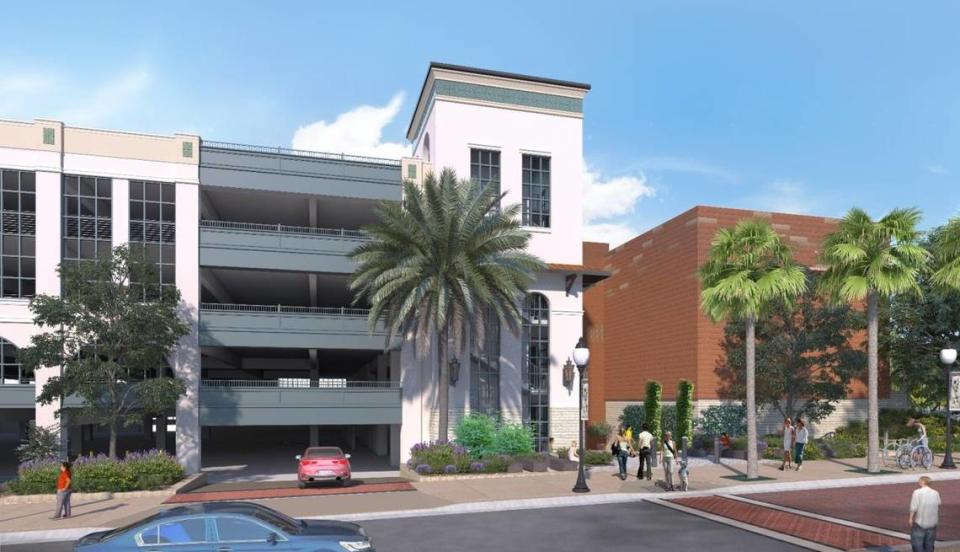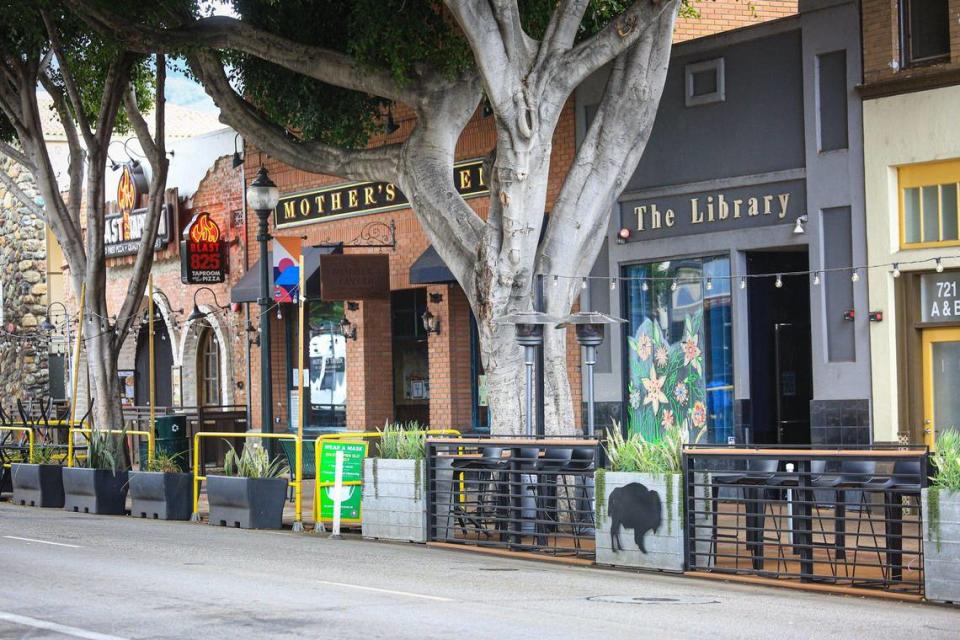Downtown SLO spot was home to car dealership, parking lot in 1960s. What is it now?
Finned cars with white-walled tires and chrome hubcaps sit at the parking lot between Higuera and Monterey Streets in a black-and-white photo shot in 1962.
You can almost hear Chuck Berry playing his latest hit on the radio.
The photo shows a spacious parking lot in one of the oldest parts of town backed by a Rambler dealership, which is the building that now houses Woodstock’s Pizza.
Today, the parking lot is the Court Street Plaza retail space that includes Pottery Barn.
The Firestone tire store and Texaco service station in the picture is now Firestone Grill. The sleek Bank of America building is now owned by U.S. Bank.
At the far left is the corner of the ill-fated Obispo Theater, which was gutted by a fire in 1975, freeing up space for more parking.

A review of improvements in the Dec. 29, 1962, edition of the San Luis Obispo Telegram-Tribune noted that the city had increased public parking spaces to 498.
For as long as I can remember, people have complained about how hard it is to park downtown.
For some, parking is tied to profound American values like an individual’s freedom to roam on a whim. Arguments over parking spaces have even resulted in fights.
Author Henry Grabar outlines the ways parking has a much larger footprint than just a place to drop off a car in his book “Paved Paradise.”

The physical geometry of parking, access lanes, parking spaces and room to maneuver all add up to 300 square feet per car.
Modern building codes create islands of commerce, floating amid oceans of parking.
Sometimes codes demand parking where it makes no sense.
Grabar notes that parking requirements drive up housing prices and reduce the number of units built.

He cites an example where a city required two parking spaces per unit at a transitional housing facility for people who had been living on the street. The residents generally didn’t have cars, so most of the spaces went unused — taking up costly real estate.
The irony is that some of the most desirable places to go have little or no parking. Those include old town areas built before the two-car garage was invented.
San Luis Obispo and other cities are wrestling with the parking issue — in some cases, trading street parking for parklets and bicycle lanes.
On the fringe of the retail area, the city is currently building San Luis Obispo’s fourth parking garage adjacent to Palm, Nipomo and Monterey streets.
